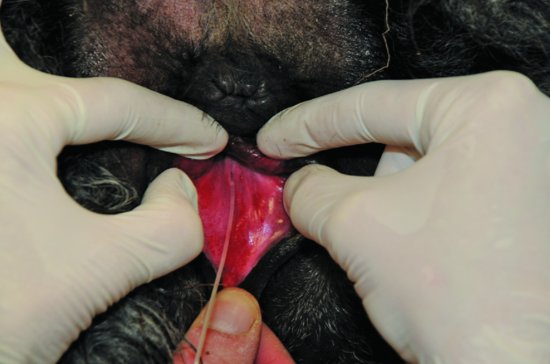Figure 49.3 As the catheter is passed into the urinary bladder, urine will spontaneously flow and can be aspirated for sampling.
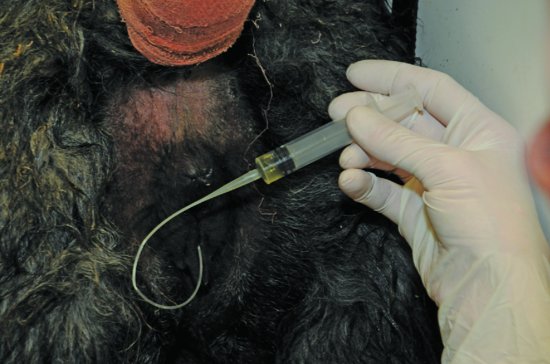
In males, the prepuce should be cleansed, and the penis must be exteriorized, which can be difficult, particularly in juveniles. In prepubertal males, adhesions are present between the penis and the sheath. Sedation is highly recommended. An assistant should be available to grasp the penis with gauze, which has been unfolded and made linear. The penis and prepuce are manipulated and the penis extended beyond the prepuce (Figure 49.4). The glans penis is grasped with the gauze. (See Figure 49.5.) Camelids have a corkscrew cartilaginous process extending from the glans. The urethral orifice is located below the cartilaginous appendage at the end of the penis (See Figure 49.6.) Unlike sheep and goats, this cartilaginous appendage is not a continuation of the urethra. A 3.5 French catheter may then be passed into the urethra (See Figure 49.7.)
Figure 49.4 Manipulation of the penis and prepuce to exteriorize the glans penis in a mature alpaca.
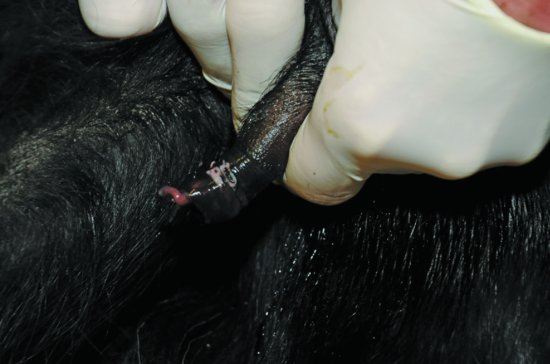
Figure 49.5 Full exteriorization of the penis in a mature alpaca. A 4 × 4 gauze sponge has been unfolded and made linear to encircle the penis for a secure grip.
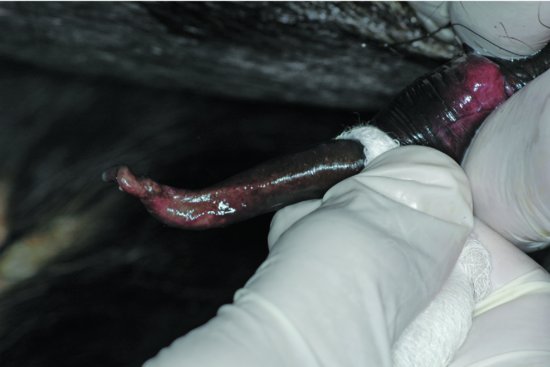
Figure 49.6 The corkscrew cartilaginous process (red arrow) and the external urethral orifice (blue arrow).
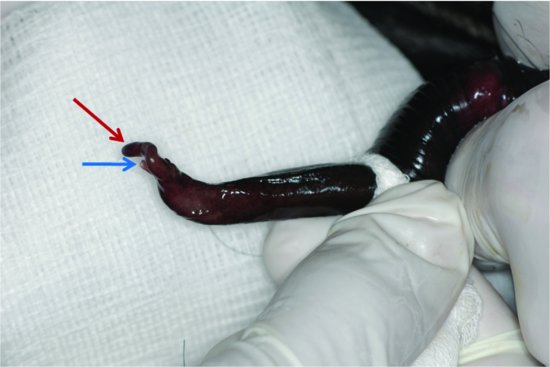
Stay updated, free articles. Join our Telegram channel

Full access? Get Clinical Tree


